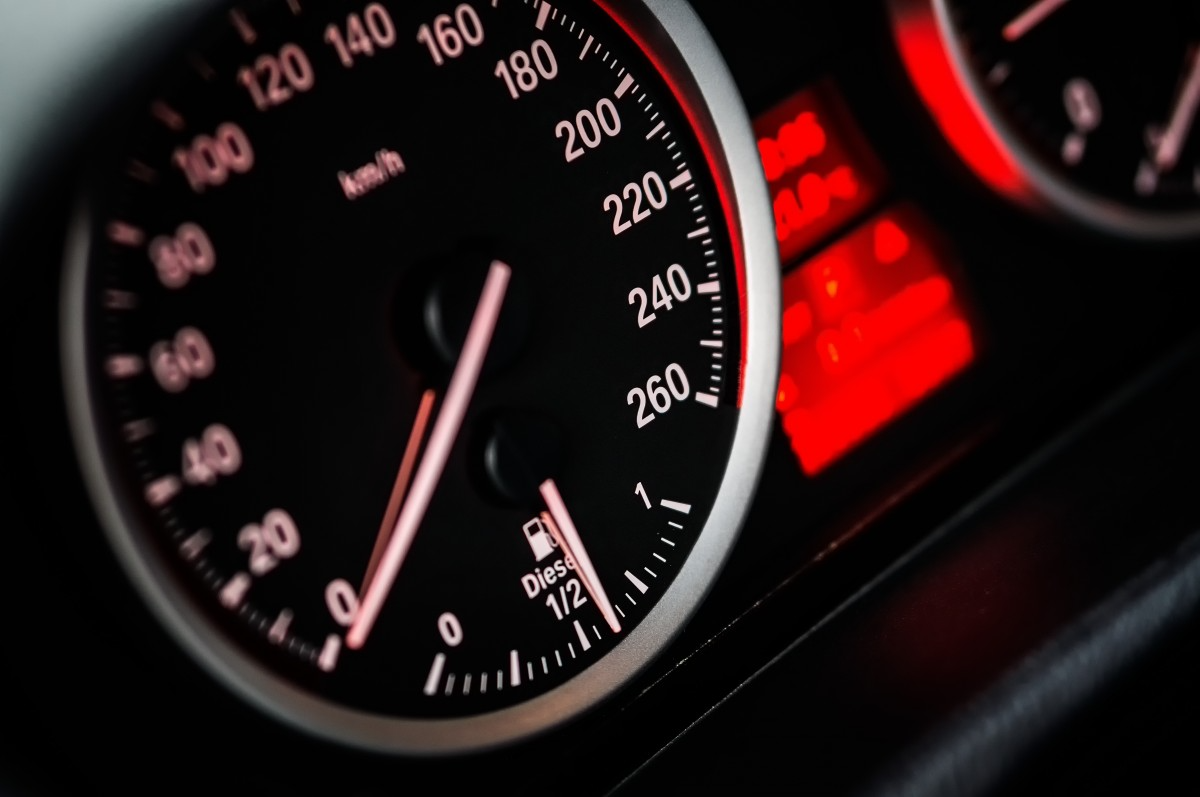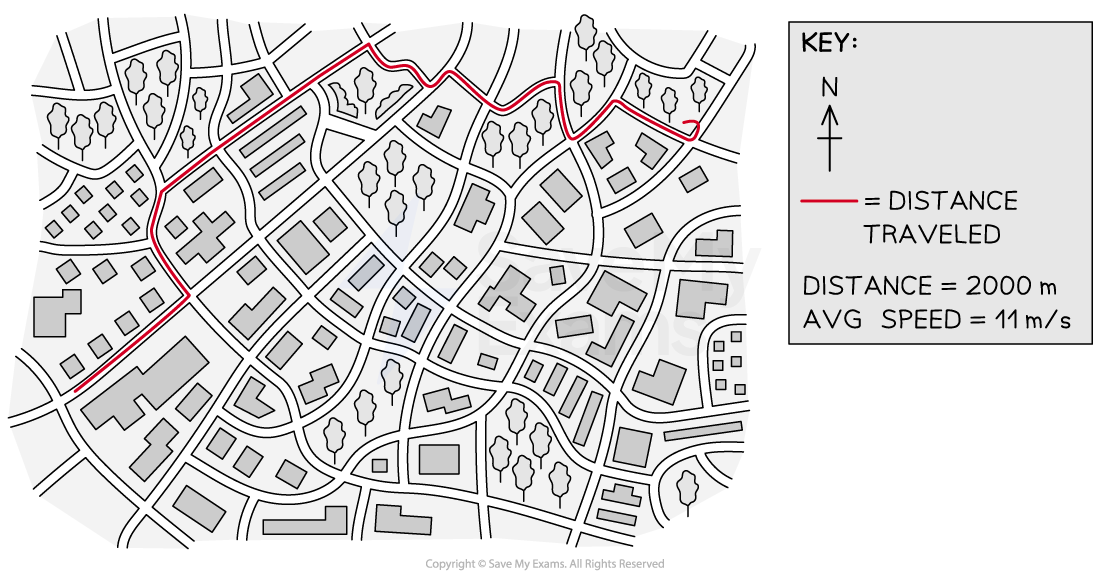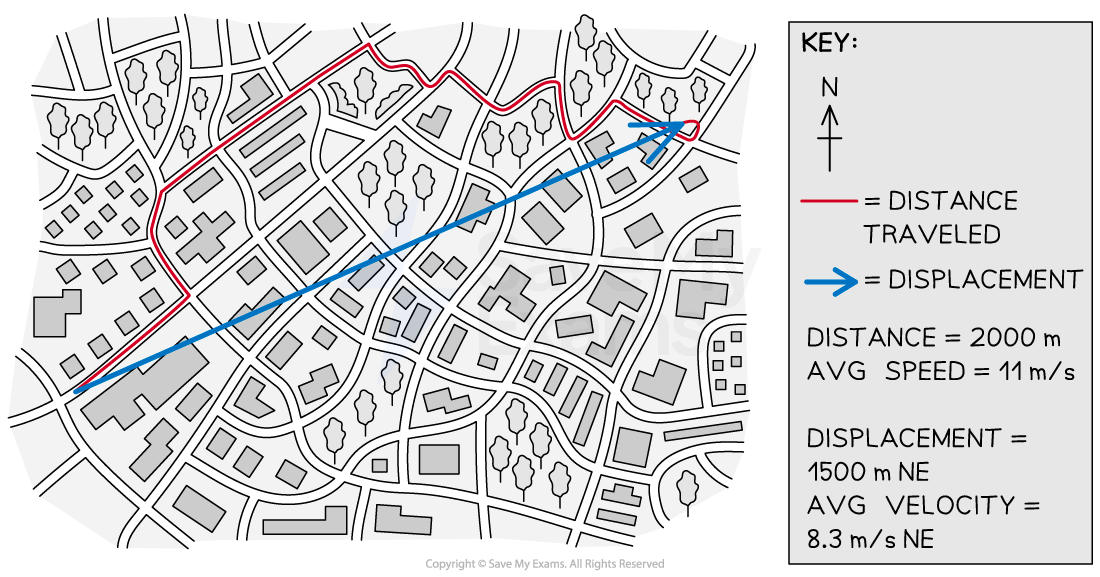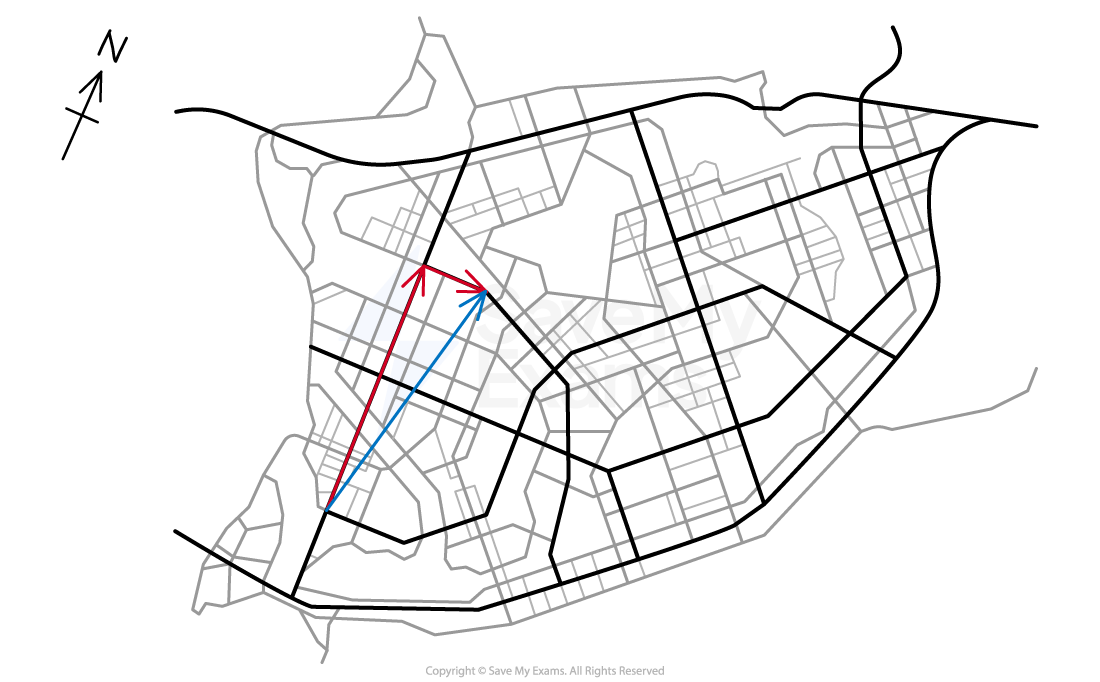Velocity (College Board AP® Physics 1: Algebra-Based): Study Guide
Average velocity
Speed
The speed of an object is defined as:
The distance traveled by an object per unit time
Speed is a scalar quantity with magnitude only
The direction of the object's motion is not described by speed
Average and instantaneous speed
The speedometer of a car gives a measure of instantaneous speed
For example, if the speedometer reads 50 miles per hour, which is 22 meters per second, it means that the car is traveling 22 meters in each second that this speed is maintained

Image: Creative commons licence from pxhere.com (opens in a new tab)
As the speed of the car changes, the speedometer will give a new value for the new instantaneous speed
The instantaneous speed is the speed at which an object travels in each instant of time
Average speed, on the other hand, describes the whole journey
Average speed considers the total distance traveled and the total time taken
For example, the car will not travel at 22 meters per second for its entire journey; it will speed up and slow down accordingly
If the car traveled a total distance of 2000 meters and the whole journey took 3 minutes, which is 180 seconds, then the average speed of the car was 11 meters per second
Map showing the distance traveled by a car

Velocity
The velocity of an object is defined as:
The displacement of an object per unit time
In other words, the rate of change of an object's position
Velocity is a vector quantity with both magnitude and direction
If an object travels with a constant speed but changes direction, then its velocity is changing
Therefore, it is possible for an object to travel at a constant speed without a constant velocity, but it is not possible for an object to travel at a constant velocity without a constant speed
The magnitude of an object's velocity is its speed
However, the magnitude of an object's average velocity is not its average speed
Average and instantaneous velocity
Average velocity also describes the whole journey of an object
Average velocity considers the initial and final states of an object over an interval of time
In other words, the displacement of an object over the total time taken
Where:
= average velocity, measured in
= displacement, measured in
= time interval, measured in
If the car had a displacement of 1500 meters over its 3 minute journey, then its average velocity would be 8.3 meters per second travelling north-east for that same car trip
Map showing the displacement of a car

Calculating the average velocity over a very small time interval yields a value that is very close to the instantaneous velocity
Negative velocity
Since velocity is a vector quantity, it can have a positive or negative value
A positive velocity value indicates an object is traveling in the initial direction of motion
A negative value of velocity indicates that an object is traveling in the opposite direction
If there is no initial direction of motion, then positive velocity is generally either:
forwards
to the right
upwards
However, mathematically, any direction can be assigned as positive as long as the opposing direction is negative
Examiner Tips and Tricks
Whichever direction you assign as positive, make sure you are consistent throughout your calculation.
Worked Example
The map below shows a high school teacher's 4 minute route through the city on their way to work. The teacher travels 1.8 km along a straight road, then turns left and travels a further 450 m before parking their car.

What is the ratio of the teacher's average speed to average velocity?
A: 1.1
B: 1.2
C: 1.3
D: 1.4
The correct answer is B
Answer:
Step 1: Analyze the scenario
The roads that the teacher traveled on are perpendicular
The length of the displacement vectors on the northbound and eastbound roads are known
These vectors can be added using trigonometry to give the resultant displacement vector

The average velocity of the teacher can then be calculated using the displacement and the time interval of the journey
The total distance traveled is the non-vector sum of the lengths of the displacement vectors on the northbound and eastbound roads
Step 2: List the known quantities
Displacement on northbound road,
Displacement on eastbound road,
Time interval,
Step 3: Determine the displacement
Using trigonometry, where
is the hypotenuse and therefore
Step 4: Calculate the average velocity
Step 5: Calculate the average speed
Determine the total distance traveled
Determine the average speed
Step 6: Calculate the ratio of average speed to average velocity
This is answer B
Examiner Tips and Tricks
The gap between the question and the answer can seem huge at first glance. It is important that you do not panic when you first read a question. All the information you require to answer the question will always be provided for you; you just need to think logically about how you can use that information to get the quantities you actually want.

Unlock more, it's free!
Did this page help you?